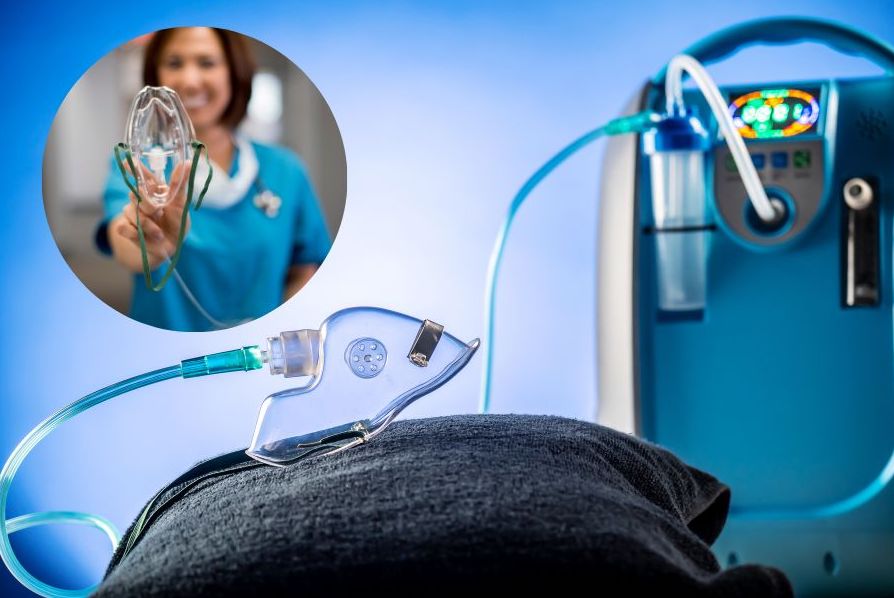Navigating the Risks and Benefits of Oxygen Therapy
In the intricate landscape of healthcare, oxygen therapy stands as a critical intervention with both risks and rewards. Understanding the nuances of this therapeutic approach is essential for healthcare providers and patients alike. This comprehensive guide aims to explore the multifaceted aspects of oxygen therapy, shedding light on the positive impacts, associated risks, and strategies for a balanced approach.
Oxygen Therapy: Balancing Risks and Rewards
Oxygen therapy plays a pivotal role in enhancing the oxygenation of individuals with respiratory challenges. From chronic lung diseases to acute respiratory distress, this therapy has become a cornerstone in patient care. As we embark on this exploration, we’ll delve into the fundamental aspects of oxygen therapy, setting the stage for an in-depth analysis of its risks and benefits.

The Positive Impact: Benefits of Oxygen Therapy on Health
Enhancing Oxygenation: Key Benefits for Respiratory Health
Oxygen therapy serves as a lifeline for individuals grappling with respiratory issues, ensuring optimal oxygen levels in the bloodstream. This section will outline how the therapy positively impacts respiratory health, alleviating symptoms and enhancing overall well-being.
Improving Quality of Life: Positive Outcomes of Oxygen Therapy
Beyond the physiological benefits, oxygen therapy contributes to an improved quality of life. Patients experience enhanced energy levels, reduced breathlessness, and an increased capacity to engage in daily activities. We’ll explore these positive outcomes in detail, providing insights into the transformative effects on patients’ lives.
Risks Associated with Oxygen Therapy: Understanding the Concerns
Delving into Potential Side Effects and Risks
While oxygen therapy is generally safe, it is not without risks. This section will carefully examine potential side effects and risks associated with oxygen therapy, considering factors such as oxygen toxicity, combustion hazards, and the risk of respiratory depression.
Identifying Patient-Specific Risks and Precautions
Understanding that each patient is unique, we’ll discuss patient-specific risks and precautions. Factors such as age, underlying health conditions, and the duration of therapy can influence the risks associated with oxygen administration. This nuanced approach ensures personalized care and risk mitigation strategies.
Balancing Act: Strategies for Mitigating Risks in Oxygen Therapy
Implementing Safety Measures for Optimal Oxygen Therapy
To ensure the safety of patients undergoing oxygen therapy, this section will outline essential safety measures. From equipment checks to proper ventilation, we’ll provide actionable strategies for healthcare providers and patients to mitigate potential risks effectively.
Addressing Common Challenges to Minimize Potential Risks
Common challenges in oxygen therapy, such as nasal dryness or discomfort, can be addressed to minimize risks. This section will offer practical solutions to these challenges, promoting adherence to therapy and reducing the likelihood of complications.
Natural Language Processing Insights: Analyzing Patient Experiences
Utilizing NLP to Extract Patient Perspectives on Oxygen Therapy
Incorporating Natural Language Processing (NLP) allows us to gain valuable insights from patient experiences. We’ll analyze online narratives, forums, and testimonials to understand how individuals perceive and articulate their experiences with oxygen therapy. This data-driven approach enhances our understanding of the real-world impact of therapy.
Understanding Symptoms and Feedback through Natural Language Processing
By examining symptoms and feedback expressed in natural language, we can identify patterns and common themes. This NLP-driven analysis provides a nuanced perspective on patient-reported symptoms, aiding healthcare providers in tailoring interventions and addressing potential issues.
Symptoms of Oxygen Therapy Overuse: Recognizing Warning Signs
Identifying Indications of Overreliance on Oxygen Therapy
While oxygen therapy is beneficial, overreliance can lead to potential complications. This section will outline symptoms and warning signs of overuse, empowering patients and healthcare providers to recognize and address these indicators promptly.
Utilizing Symptomatic Cues for Informed Decision-Making
Understanding symptomatic cues enables informed decision-making. We’ll discuss how recognizing early signs of overuse allows for timely adjustments to the therapy plan, ensuring a balanced and safe approach to oxygen administration.
Optimizing Oxygen Therapy: Personalized Approaches for Maximum Benefits
Tailoring Oxygen Therapy Plans to Individual Patient Needs
Personalization is key in optimizing the benefits of oxygen therapy. This section will delve into the importance of tailoring therapy plans to individual patient needs, considering factors such as lifestyle, medical history, and specific respiratory conditions. A personalized approach maximizes the positive outcomes of oxygen therapy.
Maximizing Positive Outcomes through Personalized Strategies
By adopting personalized strategies, healthcare providers can maximize positive outcomes for patients. We’ll explore how adjusting oxygen levels, delivery methods, and schedules based on individual requirements contributes to the overall effectiveness of therapy.
The Evolving Landscape: Recent Advances and Updates in Oxygen Therapy
Staying Informed on Cutting-Edge Developments in Oxygen Delivery
The field of oxygen therapy is dynamic, with continuous advancements in technology and delivery methods. This section will keep readers abreast of recent advances, ensuring they remain informed about the latest developments in oxygen delivery for improved patient care.
Incorporating Latest Insights for Enhanced Patient Care
Healthcare providers can enhance patient care by incorporating the latest insights and evidence-based practices. This subsection will highlight recent studies and innovations, encouraging a proactive approach to integrating new knowledge into clinical practice.
Patient Education: Empowering Individuals to Navigate Oxygen Therapy
Providing Comprehensive Resources for Patient Understanding
Empowering patients with knowledge is crucial for successful oxygen therapy. We’ll discuss the importance of providing comprehensive resources, including educational materials and guidelines, to enhance patient understanding of the therapy process.
Promoting Informed Decision-Making through Educational Initiatives
Educational initiatives play a vital role in promoting informed decision-making. This section will explore how healthcare providers can engage in patient education to foster collaboration and ensure that individuals are active participants in their oxygen therapy journey.
Frequently Asked Questions (FAQs) about the Risks and Benefits of Oxygen Therapy
1. Q: What are the key benefits of oxygen therapy for respiratory health?
A: Oxygen therapy enhances oxygenation, alleviating symptoms and improving overall respiratory well-being.
2. Q: Are there potential risks associated with oxygen therapy?
A: Yes, while generally safe, risks include oxygen toxicity, combustion hazards, and respiratory depression.
3. Q: How can safety measures be implemented for optimal oxygen therapy?
A: Safety measures include equipment checks, proper ventilation, and addressing common challenges to minimize risks.
4. Q: Can personalized approaches be adopted for oxygen therapy?
A: Absolutely. Tailoring therapy plans to individual needs and adjusting delivery methods maximizes positive outcomes.
5. Q: How can Natural Language Processing (NLP) be utilized in understanding patient experiences?
A: NLP extracts insights from patient narratives, providing a data-driven understanding of real-world therapy impact.
6. Q: What are the symptoms of overreliance on oxygen therapy?
A: Symptoms include nasal dryness, and discomfort, and recognizing these cues enables informed decision-making.
7. Q: Are there recent advances in oxygen therapy delivery methods?
A: Yes, staying informed on cutting-edge developments is crucial for optimizing patient care and therapy effectiveness.
8. Q: How can healthcare providers address common challenges in oxygen therapy?
A: Addressing challenges involves providing comprehensive patient education, resources, and proactive strategies.
9. Q: What educational initiatives can empower patients to navigate oxygen therapy?
A: Comprehensive resources, guidelines, and engaging in patient education foster informed decision-making and collaboration.
10. Q: Why is striking a balance crucial in oxygen therapy for optimal patient well-being?
A: A balanced approach ensures positive outcomes, improved quality of life, and effective navigation of oxygen therapy.
Conclusion:
As we conclude, this section will summarize key takeaways on the risks and benefits of oxygen therapy. Emphasizing the importance of a balanced approach, we’ll revisit critical points to reinforce understanding and guide both healthcare providers and patients in their decision-making.






